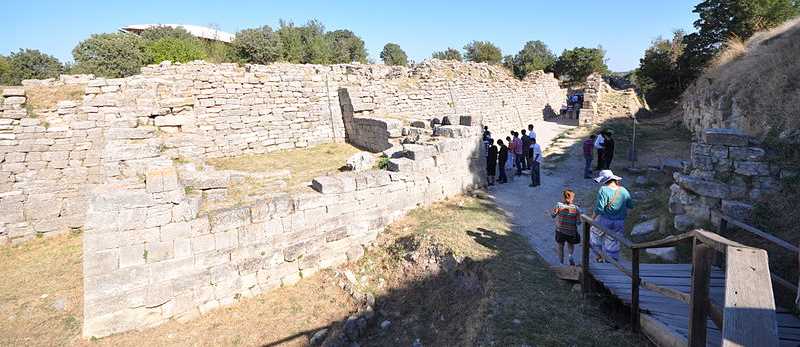Troy, which has an important place in mythology, is located in the foothills of the Kaz Mountains (Mount Ida) in Canakkale city of Turkey. Troy is one of the most important cultural values of our country. I compiled a list of 8 Important Key Moments You Need to Know About Troy for you. I hope you enjoy the list. Contact me to learn more about Troy and to hire a professional licensed Turkish tour guide to Troy ancient city in Turkey.

- The Trojan War, one of the greatest stories of mythology started because of love. The reason for this war was the kidnapping of Helen who was the most beautiful woman in the world. The armies led by Agamemnon demanded Helen should be returned to them, but they do not receive a positive response, and a long and bloody war begins.
- Over the years, this great story of mythology is thought to take place in an imaginary place, but a development that shook the archeology world occurs and Heinrich Schliemann, an amateur archaeologist, discovers Troy in 1871.
- The excavation of Troy began in 1871 and this long-term excavation full of surprising findings continues even today. The first excavation was led by Heinrich Schliemann, who was not actually an archaeologist, and Schliemann continued this exciting task until Wilhelm Dörpfeld succeeds him in 1893. It will be Dörpfeld who reveals the multi-layered structure of Troy and started the modern excavation techniques in Troy.
- Discovering the layers of Troy had many consequences. Perhaps one of the most important of these is the understanding that Troy had been a settlement center since the Bronze Age. The fact that Troy is located on the trade routes connecting Asia and Europe made Troy an indispensable settlement center for ages, and even though the city had been destroyed many times, it was also built over and over again in the same place and has become a fortress for many important civilizations of history.
- The first of these layers belongs to 3000 BC, to an era known as the Bronze Age. Troy witnessed many great civilizations from the Assyrians to the Hittites, from the Urartians to the Roman Empire, and remains of all these civilizations were preserved in the layers of the ancient city of Troy.
- The period where the Trojan War is thought to have occurred coincides with the layer of the ancient city called Troy VIIa, and the remains of this period were excavated in the 1930s by the American archeologist Carl W. Blenegen. These excavations, which have reached a lot of information about the Trojan War, which is the subject of even Hollywood productions, attracted the attention of the whole world.
- One of the most famous legends about the Trojan War, which is the subject of Homer’s Iliad and Odyssey books, one of the greatest writers of the world, is the Trojan Horse, who was brought into the city on the pretext of being a gift, and the Greek Achaean soldiers hiding in the wooden Trojan horse attacked the innocent people of Troy in the dark of the night. As a result of this attack, the Trojan Horse had become an idiom and started to be used in daily life.
- Today, Ernst Pernicka directs the excavations in Troy and the artifacts unearthed there are exhibited in various museums in Germany, Russia and the United States. As a result of an architectural competition opened in 2011, work began for the Troy Museum and Troy Museum was opened in 2018, so now we are been able to see the artifacts from this important excavation on our own land.